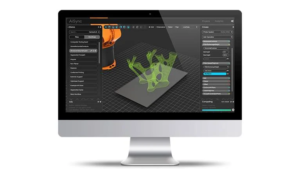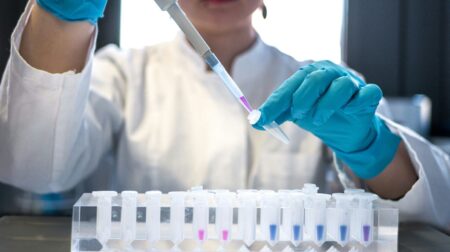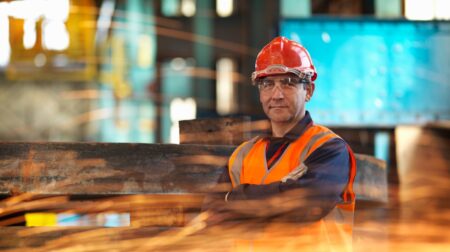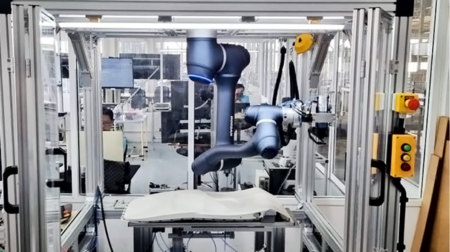London-based Software-as-a-Service company AI Build supplied its 3D printer, featuring two robot-arms, and AI-powered software to a project creating furniture from recycled plastic waste.
The Twine project, by design studio HagenHinderdael, uses filaments from Amsterdam-based social enterprise Reflow, which produces sustainable 3D printing material out of recycled plastic waste. Twine’s raw material, rPETG filament, stems from former hospital trays.
The 3D printer, in this case featuring two Kuka robotic arms – the KR30 L16 and KR90 R2700, then created the modules of the furniture.
“The biggest challenge for this particular project was the geometry of the parts and the desired aesthetic finish. This meant that no support was allowed,” said AI Build’s, COO, Michail Desyllas.

But he added that the robots were up for the job, “because these robots have the reach to allow the production of these parts. They are also fully integrated with our software which allows us to perform real-time monitoring of quality and get defect notifications.”
According to the collaboration, it took less than two weeks from the order to the finished furniture. Since Twine was designed to look as natural as beach waves, Ai Build constructed a mould shaped to a double-curved bed, for the 3D printed mix to cool down and harden.
The smaller elements were created by the KR30 L16, the wider ones by the KR90 R2700, both equipped with a filament extruder system. This system could carry up to four varying filament streams in different colours, enabling a gradient of transparencies.
Desyllas admitted that putting the heated rPETG filament on the mould, layer by layer, was tricky: “Each layer needs to be put down within a certain time-frame. Not too fast after the former one, to avoid sagging – and not too slow, to avoid adhesion issues.”
He added that due to the robot’s precision the team created aesthetic, durable, comfortable furniture ready to sit on. Each Twine element passed the quality checks, which according to Desyllas were done by “the software and the ever-watching eye of the camera system on our robots”.







